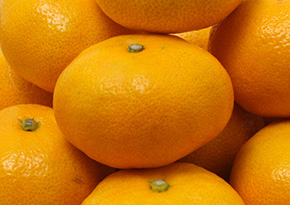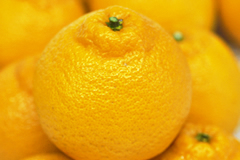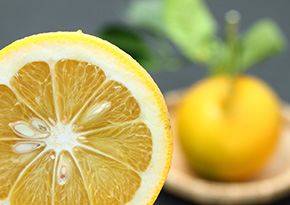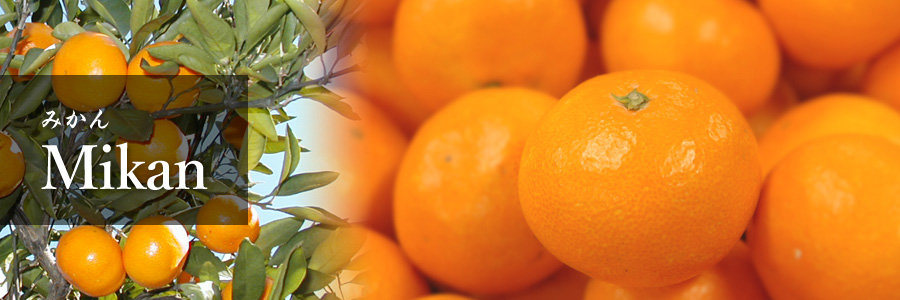A gift from the sun, grown in Tanabe facing the sea with the Kuroshio Current, bathed in warm sunlight
Wakayama boasts the highest production volume of mikan in Japan. Tanabe mandarins are grown taking advantage of the ideal warm and humid climate of the city that faces the coast where the Kuroshio Current flows and is bathed in warm Kinan sunlight.
In addition to Satsuma mandarins, the area produces a wide variety of later-ripening citrus fruits, like ponkans, dekopons, hassaku fruit, Kiyomi oranges, navel oranges, and Sanbokan oranges, so there are different types being harvested almost all throughout the year.
Most common mikan, the Satsuma mandarin

When you talk about mikan in Japan, you are usually thinking of the Satsuma mandarin. This has been a familiar fruit since long ago for their soft, thin peel that is easy to remove and the perfect amount of sweetness and sourness.
The variety that is harvested from September is the gokuwase mandarin. They are greener and more tart than other varieties, but their simple flavor and refreshing fragrance signal the arrival of the mikan season.
The mikan that ripen over the new year are sweeter, and have an exquisite melt-in-your-mouth sweetness and thin skin texture!
Late-ripening citrus fruits

These are citrus fruits that start shipping out after the Satsuma mandarin season finishes. Many varieties are grown in Tanabe, and each has a unique flavor to enjoy.
- Ponkans
- Kinan’s most famous late-ripening citrus fruit that has the triple threat of a sweet fragrance, excellent flavor, and exquisite color. These ship out from around January to late February.
- Dekopons
- The variety is called Shiranui and they are popular because they are richly flavored, easy to peel, and can be eaten with the membrane as is.
- Hassaku fruit
- Slightly larger mikan that has an excellent matching of sweetness and sourness. They have a slightly harder peel and membrane, but you will never tire of the refreshing taste of the flesh. These ship out from March to early April.

- Daidai oranges
- These are a very sour citrus fruit that are often used in ponzu sauce, and they are available from October to December. As the fruit is less likely to fall, they are considered lucky, and they are also used as decorations at New Year’s. Wakayama Prefecture has the highest production volume in Japan. Other producers are Hiroshima Prefecture and Shizuoka Prefecture.
- Kiyomi oranges
- These are a hybrid between the Satsuma mandarin orange and the Trovita orange. They are easy to peel and are very juicy with plenty of flesh and juice. These ship out from late March to April.
- Navel oranges
- These have a distinctive rich flavor and fragrance. The flesh of those that are fully ripe on the tree is especially rich and sweet. Their outer peel is hard, but the membrane is thin, and it is common to peel it thickly with a knife to eat.
Council members that sell mikan
| Name of member | Address | Phone number |
|---|---|---|
| Aisu Shoten | 656-4 Kamiakizu, Tanabe | 0739-35-0012 |
| Epoc Kinan | 313-1 Inaricho, Tanabe | 0739-26-4728 |
| Okamoto Farm | 688 Kamihaya, Tanabe | 0739-37-0003 |
| Japan Agricultural Cooperatives Kinan | 3-22-19 Takao, Tanabe (Processing Department) | 0739-25-5718 |
| Kitera | 1487-1 Kamiakizu, Tanabe | 0739-35-1177 |
| Sanchoku Ichiba Yottette Inari Honkan | 270-1 Inaricho, Tanabe | 0739-25-4741 |
| Nanki Mirai | 41-1 Minato, Tanabe | 0739-25-8230 |
| Hinataya | 755-2 Kamihaya, Tanabe | 080-3806-2716 |
| Maruyama | 746-1 Shinjocho, Tanabe | 0739-24-1700 |
